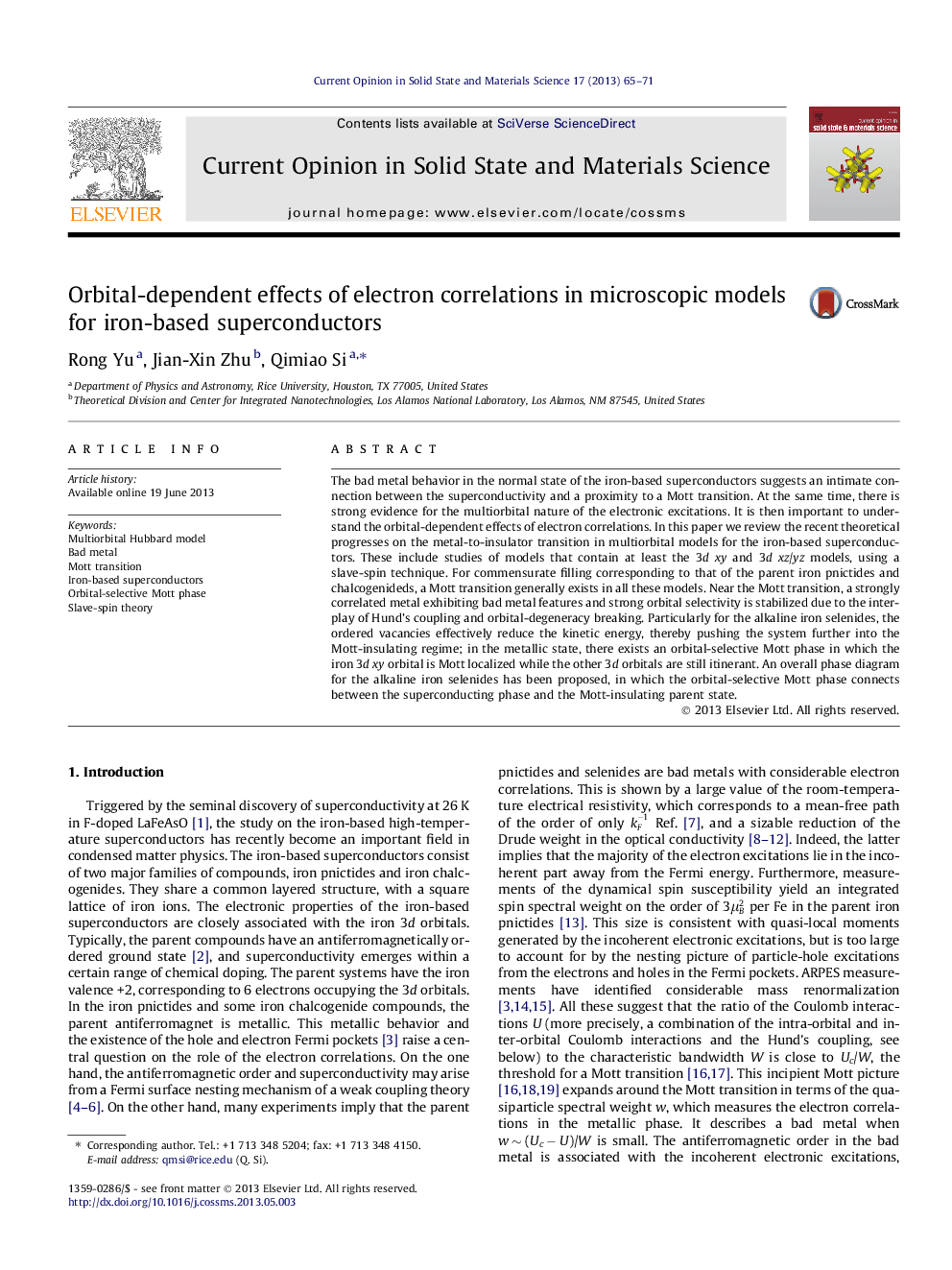| Article ID | Journal | Published Year | Pages | File Type |
|---|---|---|---|---|
| 1555481 | Current Opinion in Solid State and Materials Science | 2013 | 7 Pages |
•Recent studies on the multiorbital models for the iron-based superconductors are summarized.•Identified a strongly correlated metal regime with strong orbital selectivity.•An orbital-selective Mott phase is shown in the model for alkaline iron selenides, and the ARPES evidence discussed.•An overall phase diagram for the alkaline iron selenides is proposed.•The proposed phase diagram connects the superconducting and Mott-insulating phases.
The bad metal behavior in the normal state of the iron-based superconductors suggests an intimate connection between the superconductivity and a proximity to a Mott transition. At the same time, there is strong evidence for the multiorbital nature of the electronic excitations. It is then important to understand the orbital-dependent effects of electron correlations. In this paper we review the recent theoretical progresses on the metal-to-insulator transition in multiorbital models for the iron-based superconductors. These include studies of models that contain at least the 3d xy and 3d xz/yz models, using a slave-spin technique. For commensurate filling corresponding to that of the parent iron pnictides and chalcogenideds, a Mott transition generally exists in all these models. Near the Mott transition, a strongly correlated metal exhibiting bad metal features and strong orbital selectivity is stabilized due to the interplay of Hund’s coupling and orbital-degeneracy breaking. Particularly for the alkaline iron selenides, the ordered vacancies effectively reduce the kinetic energy, thereby pushing the system further into the Mott-insulating regime; in the metallic state, there exists an orbital-selective Mott phase in which the iron 3d xy orbital is Mott localized while the other 3d orbitals are still itinerant. An overall phase diagram for the alkaline iron selenides has been proposed, in which the orbital-selective Mott phase connects between the superconducting phase and the Mott-insulating parent state.
